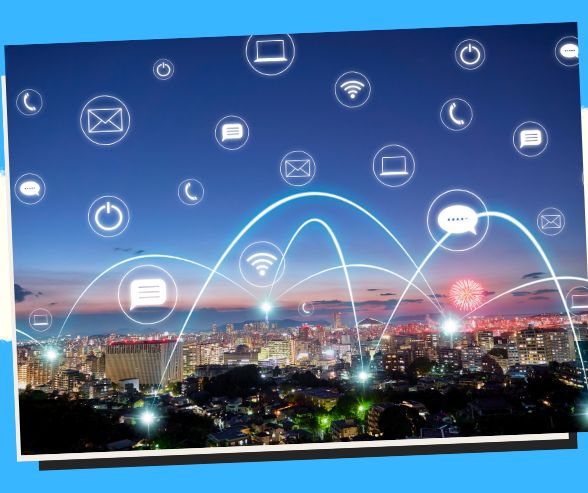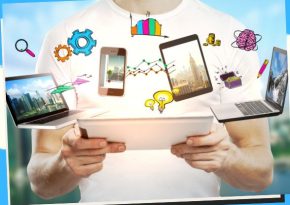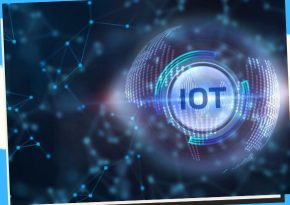
Wearable IoT Devices: The Future of Smart Living Unveiled! 💡
🏃♂️ Stay at the forefront of health and lifestyle trends with wearable IoT. Learn how they’re transforming fitness, tracking, and daily routines. 📈🩺
Wearable IoT Devices: Revolutionizing Health, Lifestyle, and Beyond! 💪🌐”
In an era of unprecedented technological advancement, wearable Internet of Things (IoT) devices stand as a testament to our ability to seamlessly merge the digital and physical worlds. These wearable marvels have transcended their early reputation as mere fitness trackers to become indispensable companions in our daily lives. From monitoring our health and wellness to enhancing productivity and connectivity, wearable IoT devices have opened new avenues for innovation and self-improvement. This comprehensive exploration’ll dive deep into wearable IoT devices, uncovering their diverse applications, benefits, and the exciting future. 📱⌚🌐
What Are Wearable IoT Devices?
Wearable IoT devices are electronic gadgets designed to be worn on the body, typically as clothing or accessories, with sensors, connectivity features, and data-processing capabilities. These devices gather data from the wearer’s body or environment and transmit, store, or analyze this data, often via a wireless connection to other devices or the internet.
1. Health and Fitness Wearables: The Wellness Revolution
One of the most prominent categories of wearable IoT devices is those focused on health and fitness. These wearables have transformed the way we monitor and manage our well-being:
- Fitness Trackers: Devices like Fitbit, Garmin, and Apple Watch track physical activities, count steps, measure heart rate, and even monitor sleep patterns. They provide real-time feedback and motivate users to stay active.
- Smartwatches: Beyond fitness tracking, smartwatches offer many features, including message notifications, GPS navigation, and app integration. They’ve become indispensable for staying connected and organized.
- Health Monitors: Wearables like ECG-enabled smartwatches can monitor heart health, while continuous glucose monitors (CGMs) help diabetics manage their blood sugar levels more effectively.
2. Smart Clothing: The Future of Wearables
The next frontier in wearable IoT devices is smart clothing. These innovative textiles are embedded with sensors and electronics, seamlessly integrating technology into our daily attire:
- Smart Fabrics: Clothing made from smart fabrics can monitor vital signs like body temperature, heart rate, and even hydration levels. They offer comfort and convenience while providing valuable health insights.
- Wearable E-Skin: Electronic skin, or e-skin, can be integrated into clothing to measure pressure, temperature, and motion. It has potential applications in sports, healthcare, and virtual reality.
- Wearable Tech Suits: Developed for athletes, wearable tech suits are equipped with sensors to track and optimize movements, enabling athletes to improve their performance.
3. Augmented Reality (AR) and Virtual Reality (VR) Headsets: A New Dimension
AR and VR headsets are wearable IoT devices that transport users to immersive digital worlds:
- AR Headsets: Devices like Microsoft HoloLens and Google Glass overlay digital information onto the real world. They find applications in education, training, and industrial use cases.
- VR Headsets: Oculus Rift, HTC Vive, and PlayStation VR are popular VR headsets that provide immersive gaming experiences. They are also used in healthcare for pain management and therapy.
4. Smart Glasses: More Than Meets the Eye
Smart glasses have evolved from their initial niche market to become versatile wearable IoT devices:
- Assistive Technology: Smart glasses like OrCam MyEye assist individuals with visual impairments by reading aloud text, identifying objects, and recognizing faces.
- Enterprise Use: Companies like Google, Microsoft, and Vuzix have developed smart glasses for enterprise applications, enhancing worker productivity in industries like manufacturing and logistics.
5. Hearables: Beyond the Earphones
Hearables are smart ear-worn devices that offer an array of functions:
- True Wireless Earbuds: Beyond delivering high-quality audio, these earbuds can track fitness metrics, provide real-time language translation, and offer voice assistants like Siri and Alexa.
- Hearing Aids: Smart hearing aids can be customized for individual hearing needs, with noise reduction and smartphone connectivity features.
Benefits of Wearable IoT Devices
The rise of wearable IoT devices has ushered in a host of benefits for individuals and society as a whole:
- Health and Wellness: Wearables help users lead healthier lives by encouraging physical activity, monitoring vital signs, and providing timely health alerts.
- Convenience and Connectivity: Smartwatches and wearables keep users connected by providing call and message notifications, calendar reminders, and easy access to information.
- Productivity and Efficiency: AR and VR headsets boost productivity in industries like design, training, and healthcare, enhancing efficiency and reducing errors.
- Accessibility: Wearable tech, such as smart glasses and e-skin, assists individuals with disabilities by providing new ways to interact with the world.
- Safety and Security: Wearables like personal safety alarms and GPS trackers enhance personal security, particularly for vulnerable populations.
- Data-Driven Insights: The data collected by wearables can be invaluable for individuals and healthcare providers, offering insights into health trends and potential issues.
Challenges and Considerations
While wearable IoT devices hold immense promise, they also come with challenges and considerations:
- Privacy Concerns: The data collected by wearables can be highly personal. Striking a balance between convenience and privacy is essential.
- Interoperability: Different devices and platforms must seamlessly communicate and share data to realize the full potential of wearables.
- Battery Life: Many wearables rely on rechargeable batteries. Longer battery life is crucial to reduce the need for frequent charging.
- Design and Comfort: Wearable devices must be comfortable for prolonged use and aesthetically appealing to encourage adoption.
- Data Accuracy: Data collected by wearables is crucial, especially in healthcare applications.
The Future of Wearable IoT Devices
The future of wearable IoT devices is bright, with ongoing advancements in technology promising even more capabilities:
- Healthcare Revolution: Wearables will continue to play a pivotal role in healthcare, with the potential for early disease detection, remote monitoring, and personalized medicine.
- Fashion Meets Function: Integrating technology and fashion will drive the adoption of smart clothing, making wearables more stylish and comfortable.
- Mixed Reality: AR and VR will become integral to various industries, from education and healthcare to entertainment and remote work.
- Neurotechnology: Brain-computer interfaces (BCIs) may lead to direct brain control of devices, opening up new frontiers in human-computer interaction.
- Environment and Sustainability: Wearables will contribute to environmental monitoring and sustainable living by tracking personal environmental impact.
Conclusion
Wearable IoT devices have evolved beyond their initial fitness tracking capabilities, ushering in a new era of personalized, connected, and data-driven living. From enhancing our health and wellness to revolutionizing industries and transforming how we perceive reality, these devices profoundly impact our daily lives.
As wearable IoT technology advances, individuals, developers, and policymakers must navigate the ethical and privacy challenges that arise. However, one thing is clear: the wearable IoT revolution is here to stay, and it promises a future where technology seamlessly integrates with our lives, making them healthier, more efficient, and more enjoyable. 🌐📱💪
Related Queries
Wearable IoT devices: Future of smart living
Health and lifestyle with wearable IoT
Convenience of wearable IoT gadgets
Boost productivity with wearable IoT tech
Connecting to the future with wearable IoT
Healthcare revolution with wearable IoT
Data-driven insights with wearable IoT analytics
Urban lifestyles meet IoT with wearables
Wearable IoT innovations: From fitness to fashion
Elevate your life with wearable IoT technology
Save/Share this story with QR CODE
Disclaimer
This article is for informational purposes only and does not constitute endorsement of any specific technologies or methodologies and financial advice or endorsement of any specific products or services.
📩 Need to get in touch?
Feel free to Email Us for comments, suggestions, reviews, or anything else.
We appreciate your reading. 😊Simple Ways To Say Thanks & Support Us:
1.) ❤️GIVE A TIP. Send a small donation thru Paypal😊❤️
Your DONATION will be used to fund and maintain NEXTGENDAY.com
Subscribers in the Philippines can make donations to mobile number 0917 906 3081, thru GCash.
3.) 🛒 BUY or SIGN UP to our AFFILIATE PARTNERS.
4.) 👍 Give this news article a THUMBS UP, and Leave a Comment (at Least Five Words).
AFFILIATE PARTNERS

World Class Nutritional Supplements - Buy Highest Quality Products, Purest Most Healthy Ingredients, Direct to your Door! Up to 90% OFF.
Join LiveGood Today - A company created to satisfy the world's most demanding leaders and entrepreneurs, with the best compensation plan today.



 Business Technology, Finance Technology & Information Technology
Business Technology, Finance Technology & Information Technology





